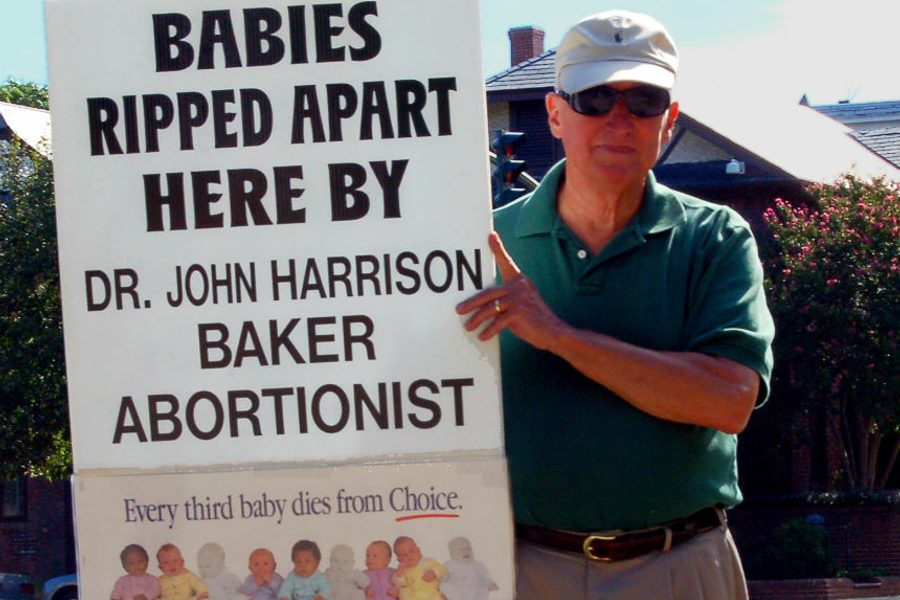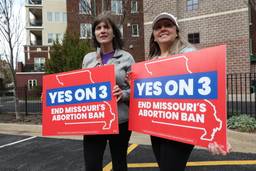What the Supreme Court Doesn’t See
Striking down clinic buffer zones doesn’t protect free speech; it invites harassment.
Lauren Rankin

Reprinted with permission from RH Reality Check.
This Saturday was like most Saturdays for me. While others were heading for a run, for brunch, or even were still asleep, I was on a sidewalk, wearing a neon-yellow vest, waiting for patients at an abortion clinic.
I took a piece of bright orange chalk and carefully marked the eight-foot radius around the building’s entrances. My clinic has a buffer zone.
On Thursday, the Supreme Court unanimously struck down Massachusetts’ 35-foot buffer zone. In a blow to patients in Massachusetts and perhaps nationwide, the Court ruled that the state’s 35-foot buffer zone at abortion clinics violates the First Amendment rights of anti-choice protesters. These protesters, the Court argued, aren’t really protesters at all, but rather “petitioners” who seek “to engage in personal, caring, consensual conversations with women about various alternatives.”
If only the Supreme Court could see what I see every weekend.
It’s easy to criticize buffer zones as inhibiting peaceful, free speech if you don’t see what I see on Saturday mornings. I believe fervently in the right to free speech, but what happens outside of abortion clinics, whether at the last clinic in Mississippi or at a clinic in “pro-choice” New Jersey, isn’t peaceful assembly. It is harassment, hiding behind the First Amendment. On Thursday, the Supreme Court said that the abuse and harassment so many patients experience at abortion clinics simply doesn’t matter to them.
I’ve been a volunteer escort at an abortion clinic in Englewood, New Jersey, for the past six months. For the first three months of my time as a clinic escort, our clinic had no buffer zone. Our clinic escort program was started in December 2013 by two incredible activists who organized the program in response to the increasing vitriol that was taking place in front of the clinic. My first few weeks on the sidewalk were a rude awakening about abortion access in my own state, as I tried mightily to walk patients through a literal gauntlet of shame and intimidation, as you can see here.
In that time, I have seen countless women reduced to tears and shaking, just for trying to access the healthcare to which they are constitutionally entitled. Prior to the implementation of our buffer zone, there would be two men positioned on either side of the door, filming the faces of every single patient and companion who walked inside. I’ve had patients ask me, with terror in their eyes, “Why are they doing this to me?” I have witnessed a man whose wife was terminating a wanted pregnancy due to a fetal anomaly be lectured by an anti-choice “sidewalk counselor” on why God has a plan for that “baby” and he should “be a man, Dad.” I have watched as patients and companions cover their face to avoid being filmed by the anti-choice protesters who put their images online. I have watched one of my fellow clinic escorts be violently shoved by an anti-choice protester. I have personally been sexually harassed by an anti-choice protester.
In mid-March, the Englewood City Council voted unanimously to enact an eight-foot buffer zone at the city’s abortion clinics, among other healthcare facilities. The ordinance went into effect a few weeks later, on April 1. The clinic has not been the same since.
While the anti-choice protesters are still there, the mood is noticeably different. Some of the“counselors” from a nearby crisis pregnancy center still shove literature filled with junk science into patients’ faces, and yes, we still have some men who scream at patients and companions who enter the clinic. This tells us that the buffer zone doesn’t infringe on anyone’s First Amendment rights; they are still free to interact with patients outside of the eight-foot zone, and they are doing just that.
But the demeanor of patients overall has really changed. They feel safer knowing that there is a space up ahead at which point no one can get in their faces. Anti-choice protesters have stopped overtly blocking the sidewalk, not allowing patients and their companions to pass, and protesters have stopped physically jostling for dominance, shoving their backs and sometimes elbows into escorts and occasionally patients. Patients aren’t subject to physical harassment, and that isn’t just a good thing — it’s their right.
The reason that buffer zones are often created specifically for abortion clinics is because this kind of harassment and intimidation simply doesn’t exist in any other branch of healthcare. A patient seeking care for tonsillitis isn’t told they’ve defiled their body, that God will punish them for this decision. A patient seeking care for a broken arm won’t be filmed against their will and have their images spread across the Internet with the words “murderer” and “sinner” underneath. But a patient seeking abortion care is subject to all of this and more. A patient seeking abortion care is often treated as less than human, all in the name of “free speech.”
While the ruling is definitely a setback for buffer zone laws and could contribute to the repeal of similar buffer zones around the country, the Supreme Court did not throw out buffer zones at abortion clinics entirely, as Jessica Mason Pieklo notes. Instead, it found Massachusetts’ buffer zone to be unconstitutional because it burdens “substantially more speech than necessary.”
In light of this ruling, I and other Englewood clinic escorts remain confident that the city’sbuffer zone law would hold up to a legal challenge. Unlike Massachusetts’ law, Englewood’s buffer zone law creates an eight-foot buffer at all of the city’s healthcare facilities as well as transitional facilities, like domestic violence and sexual assault shelters. Englewood’s buffer zone isn’t specifically about abortion — though, it’s clear these clinics need buffer zones most — but about allowing people to freely access all types of care to which they are constitutionally entitled.
This Saturday, after the ruling, it was surprisingly quiet at the Englewood clinic. We had our usual cast of characters, but the calm after the pre-buffer zone storm continued. That’s a testament to our buffer zone: Even after such a dramatic, emotional ruling for all sides on this issue, patients were still able to access the clinic. They were still able to get in the door without fearing for their physical safety. That’s a victory for Englewood, for patients, and for our democracy.
I don’t know what the future holds for buffer zone legislation in Englewood or anywhere else — if, for instance, every single buffer zone law will be struck down, domino-style. But I sincerely hope that every person who feels that buffer zones infringe on the First Amendment rights of “peaceful protesters” takes a little time out of their Saturday morning to see what really goes on at abortion clinics, to experience firsthand the horrendous abuse and terrifying intimidation that patients endure in order to access constitutionally protected health care.
I will continue to wield that bright orange chalk with pride because I know that, for now, our buffer zone is in effect. It is the law. And, most importantly, it works.





